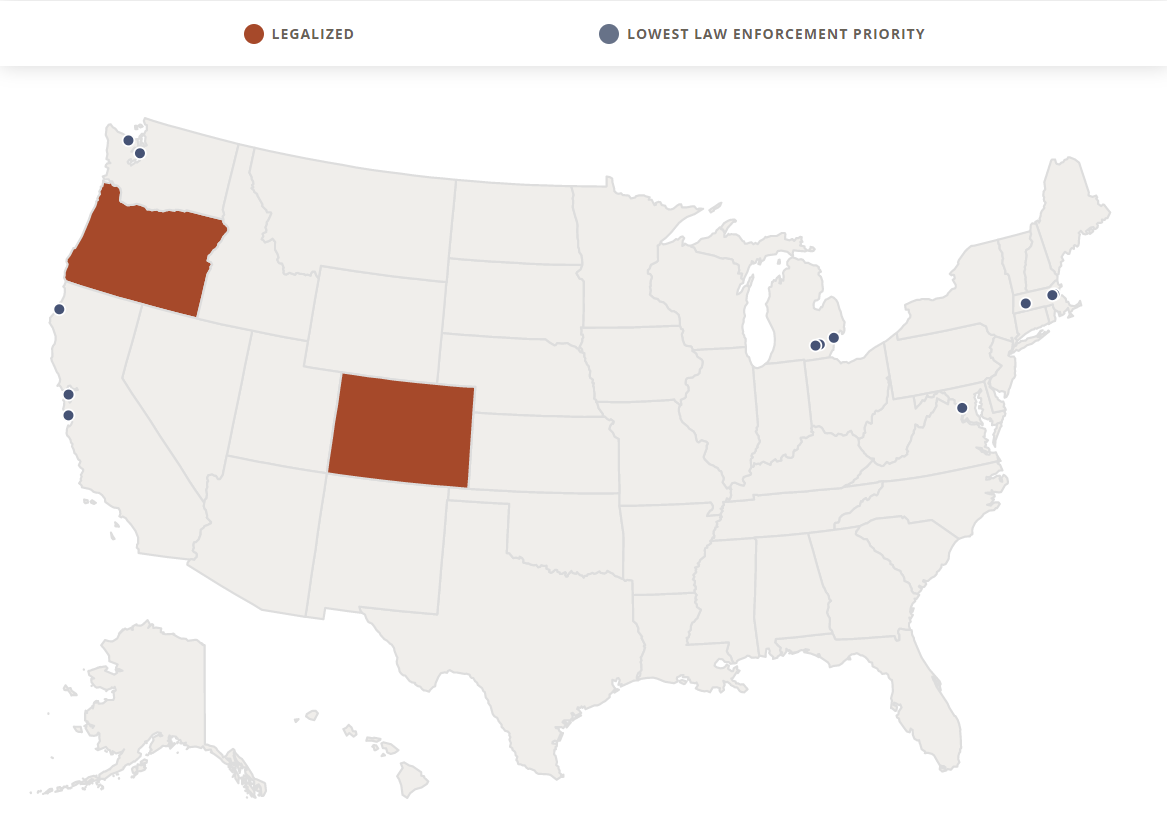The Oregon Health Authority (OHA) released the rest of its draft psilocybin rules as predicted a few weeks back. We’ve had a minute to look at them. This post and the next few will cover some of the high points. In general, OHA did a good job implementing the Oregon Psilocybin Advisory Board’s (“Board”) recommendations around many of the issues. Consternation around that topic, and around OHA timelines more generally, is fading to the rearview.
Before diving in, I want to make one very important disclaimer: the draft rules can change! And some of them will. I keep telling this to our clients who are making plans and even signing agreements with others based on these proposed rules. Presently, three rules advisory committees (RACs) are seated to provide input on aspects of these preliminary rules. Those RACs kicked off this week, and each will meet a total of three times through September 30th. A public comment period is also pending.
Finally, for any Oregon lawyers in the crowd, I am presenting on these rules on September 23. With me will be Mason Marks, Board appointee and Harris Sliwoski attorney, and OHA’s Jesse Sweet, who is the primary drafter of these rules. Without further ado:
Psilocybin Product Quantity Limits (333-333-2200)
The rules are clear that quantities of psilocybin products (which may only derive from psilocybe cubensis) will be measured in grams. No surprise there. The possession limits for manufacturers and service centers, however, are interesting. Service centers may only possess up to 100 grams of psilocybin at any given time, and manufacturers may only possess up to 200 grams. (Note: 1 gram = 1,000 milligrams.) There is a request protocol for a service center or manufacturer to exceed these limits.
Packaging, Serving Size and Labeling (333-333-2230 – 2400)
Here you’ll find standard fare around packaging information and integrity, packaging that is not attractive to minors, etc. The most interesting proviso in these sections provides that a serving of psilocybin may not exceed 25 mg, but there is no limitation on manufactures offering products in smaller doses (e.g. 1 or 5 or 10 mg). That’s huge. That means microdosing is going to be allowed after much debate. Finally, a package may not contain more than one serving.
Facilitator Exam and Application Process (333-333-3200 – 4000)
All facilitators have to pass an exam, which is not news. The passing score threshold is set at 75 percent and it appears that (unlimited) retakes are authorized, provided the examinee waits at least 48 hours after any failed examination. There application process for all prospective licensees is laid out in detail in these sections. This includes status items (e.g. proof of residency, fingerprints and certain financial interest holders) as well as orchestrated submissions (e.g. social equity plan, site and safety center plans, and a catch-all for anything else OHA may require).
Social Equity Plans (333-333-4020)
Everyone has to have one. If an applicant fails to submit a social equity plan, the application will not be considered complete. It’s unclear to what extent OHA will consider these beyond ensuring certain information is present, but licensees do have an obligation to provide written notice to OHA within 60 days of making any change to a social equity plan change.
True Name on Application; Financial Interests (333-333-4020 – 4030)
As we predicted long ago, these are very similar what exist in the Oregon cannabis rules. The most prominent difference is where the “applicant’ threshold lies. Here an “applicant” is defined in the rules as:
an individual or legal entity who: a) holds or controls an interest of more than 10 percent in the business proposed to be licensed; b) is entitled to receive 10 percent or more of revenue, profits or proceeds from the business proposed to be licensed; or c) is entitled to exercise control over the business which can be indicated by, but is not limited to, authority to bind the business to contract, obligations or debt.
By choosing the 10 percent number, OHA has signaled it wants more disclosure than required of cannabis business (generally 20 percent). This is particularly important in the context of the psilocybin program’s problematic residency requirement for majority license ownership, discussed next.
View the US Map of Psilocybin Legality by State
Residency (333-333-4050)
The two-year residency requirement is ill-advised from a business planning perspective, and it’s probably unconstitutional. Just wanted to get that out of the way. Please call us if you want to litigate this and I’ll link you up with one of the litigators here.
In any case, the residency requirement here follows the Measure 109 outline, in that it sunsets January 1, 2025. I expect to be drawing up many agreements with call options and such for out-of-state, minority owners of Oregon psilocybin service centers and manufacturers effective that date. For psilocybin facilitators, which is a personal class of license, the residency requirement relates only to the person.
For manufacturers and service centers, the draft rules are clear that the threshold local ownership requirement is “more than 50%”. We lawyers tend to dislike 50/50 deals, so the “50 plus” requirement is welcome in that respect. Beyond that, the way you “prove” Oregon residency does not follow the statutory definition of “resident” found at ORS 316.027 (which has no two-year stricture). The draft rules instead provide that “Proof of residency as required under this rule may be documented by providing:
(a) A valid Oregon driver license or Oregon identification card issued at least two years prior to the date of application. (b) Oregon full-year resident tax returns for the last two years. (c) Proof of Oregon voter registration issued at least two years prior to the date of application; (d) Utility bills, lease agreements, rental receipts, mortgage statements or similar documents that contain the name and address of the applicant dated at least two years prior to the date of application and from the most recent month. (e) Letter from a homeless shelter, nonprofit entity, employer or government agency attesting that applicant has been an Oregon resident for at least two years. (f) Any other documentation that the Authority determines to reliably demonstrate proof of Oregon residency for the last two years[.]
Those criteria at (a) – (f) should be read as joined by “ors” rather than “ands.” In other words, if a service center or manufacturing applicant has a “more than 50%” owner who can provide any of the foregoing, the threshold will be met.
Learn More About Oregon Psilocybin Rules:
- Oregon Proposed Psilocybin Rules: License Fees
- Oregon Proposed Psilocybin Rules: Licensed Premise Requirements
- Oregon Proposed Psilocybin Rules: Service Centers
- Oregon Proposed Psilocybin Rules: Facilitators, Sessions, Dosing
- Oregon Proposed Psilocybin Rules,: Tracking, Advertising, Prohibited Conduct


























